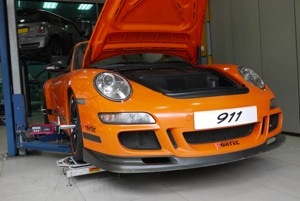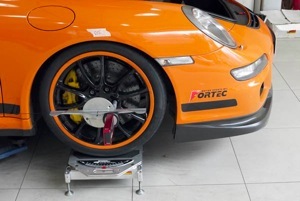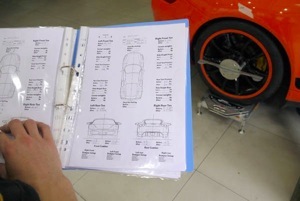Copyright © Stuttgart Performance (HK) Company Limited 2012. All Rights Reserved.版權所有 不得轉載

Wheel alignment, Corner weight
Corner balancing. If you've been around racing a little bit, you've surely heard this term before. Or perhaps you've heard NASCAR announcers talk about "wedge," which is basically the same thing. Corner balancing is commonly misunderstood, like many other things in the racing world, and we're here to help clear up exacltly what it is, what it's capable of and why you might want to balance your car. If you've ever installed a set of coilovers before, you know you can adjust the car's height, but have you ever wondered if there's more to it than just setting the fender gaps to be all the same? Of course there is! The most common analogy used with corner balancing is a chair, or stool, that teeter-totters. When it doesn't have all of its legs planted firmly in the ground, it's not corner balanced. In fact, it most likely carries 100 percent of your weight on just two of its legs. Needless to say, that's bad.
Our goal is to split the weight carried evenly between the two diagonal sets of wheels to improve predictable handling. Imagine raising the ride height of the left/front and right/rear wheels a ridiculous amount-say 10 inches. Imagine what the car would be like-it would be that teeter-tottering chair. You would literally be able to lift up and push down on the front/right fender and watch the car teeter back and fourth. Because we're working with a car resting on springs, the issue can still exist, even if it looks like the car is evenly planted on all fours to the untrained eye.



